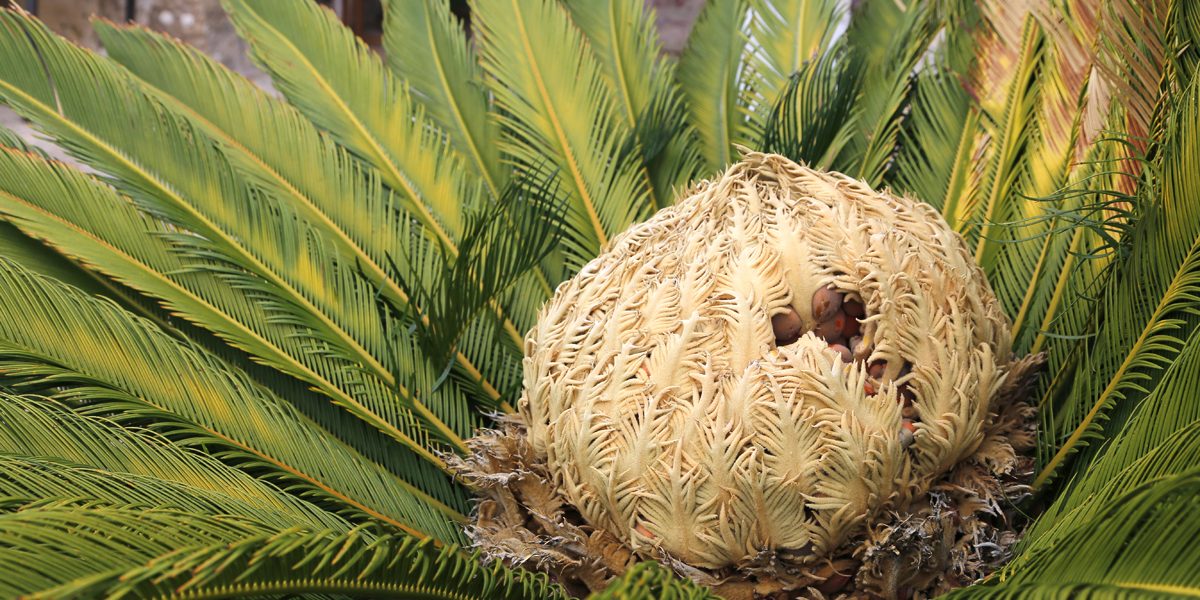Sago palms feature a thick and hairy trunk, with feathery leaves. The Sago tends to thrive in USDA zone 7. They can deal with a bit of cold weather, but would rather live in warm areas.
Sago palms can live for up to one hundred years. They are slow-growing and will usually produce one new frond each and every year. These palms come from the tropical plant family called Cycas, complete with forty species. So when and how should you trim your sago palm? Follow our guide below.
Sago Palm Tree Care
Sago palms (Cycas revoluta) add a beach like, somewhat primitive, focal point to your landscaping. Even though the large fronds are comparable of palms, Sagos palms are surprisingly cycads and more closely related to conifer trees. Sago palms grow in USDA plant hardiness zones 8 through 10. A mature plant can sometimes reach up to 10 feet tall when cared for properly.
Oftentimes, yellow fronds are the result of a nutrient deficiency. This can typically be remedied with a boost of fertilizer, including a citrus fertilizer. Sickly-looking plants can be brought back to life with manganese sulfate watered into the soil.
Manganese deficiencies are quite common with sago palms. Try to fertilize these plants at least every six weeks during their growing season for the best results possible. While some individuals choose to prune the plant by removing the yellow leaves, this is not recommended by the professionals. This can cause the issue to worsen over time, eventually moving up to the next tier of leaves.
As the leaves are dying, they still absorb nutrients. This means, if they are removed, it could stunt the plant growth, leaving the palm susceptible to infections. It’s recommended to only prune leaves that are brown aka dead.
How To Trim Sago Palm
Pruning is only necessary for aesthetics. You can remove the cone from the center of the Sago carefully, but try not to damage the growing point beneath it. If it is left in place, the cone will break apart and fall off on its own as new foliage takes over. If the old foliage becomes tattered, cut them off close to the trunk after new leaves have entirely unfolded.
Refrain from ever excessively pruning the leaves. Removed only dead or badly damaged leaves. Cutting any green fronds can weaken the plant’s overall health, which makes it more susceptible to diseases and pests.
Begin by cutting the oldest and lowest leaves as close to the trunk as you can. In some cases, all but the very top fronds will be removed, although this can be extreme. Do not trim any sago leaves that are positioned roughly between ten and two o’clock.

If you’re ready to choose and have a pomegranate tree planted at your Mesa home contact the knowledgeable and helpful folks at your local A&P Nursery.






